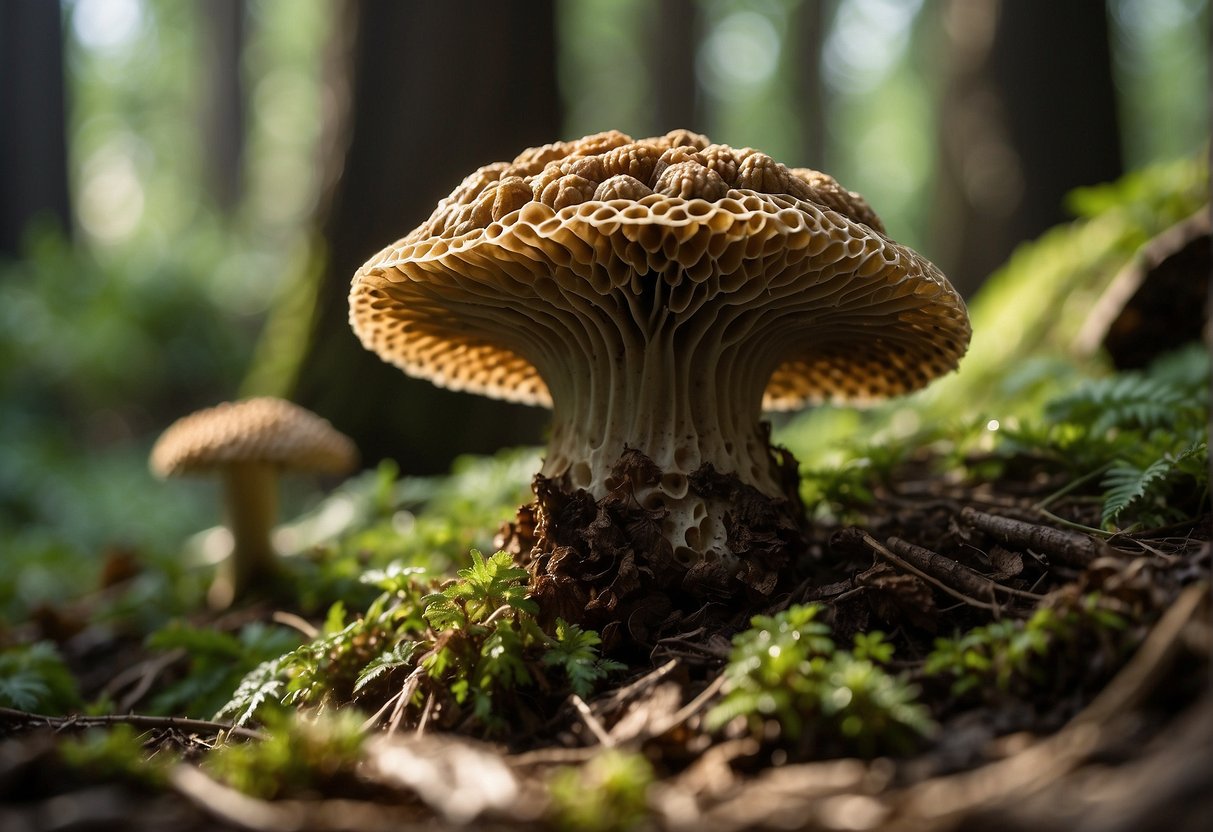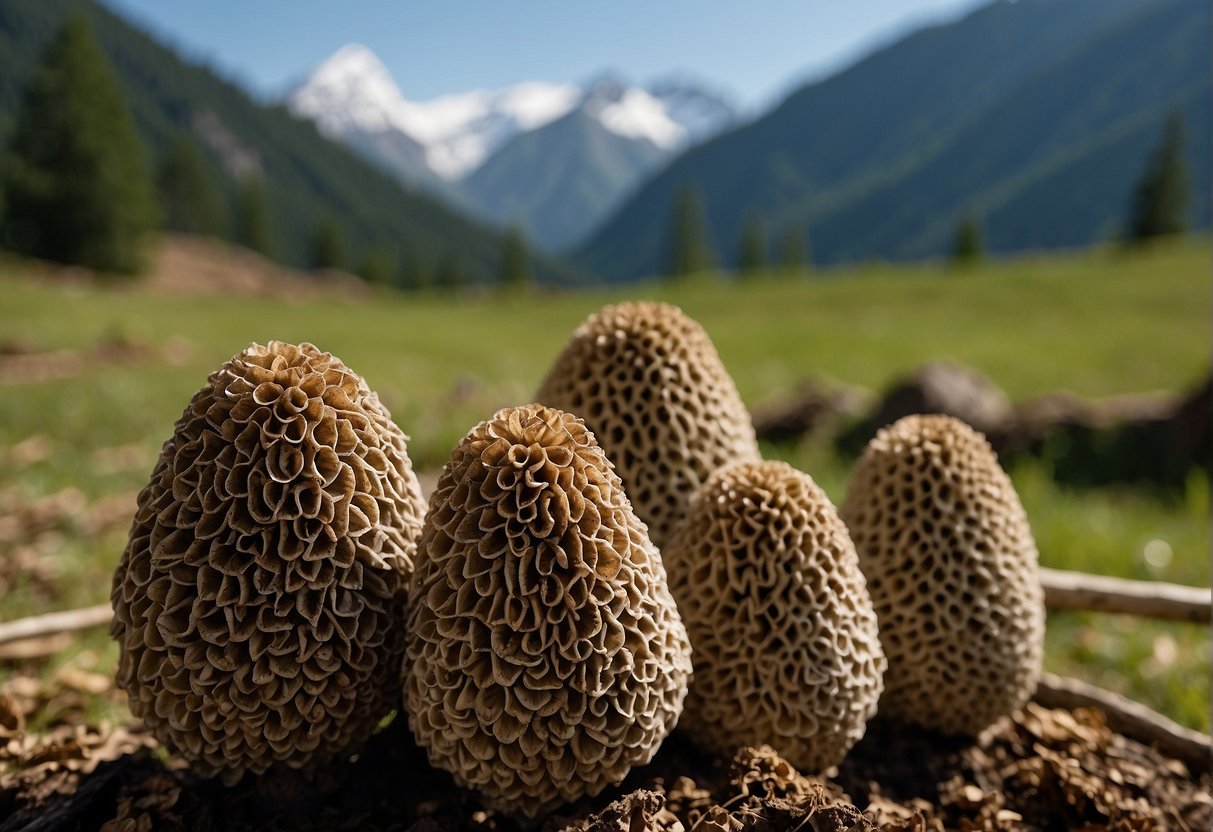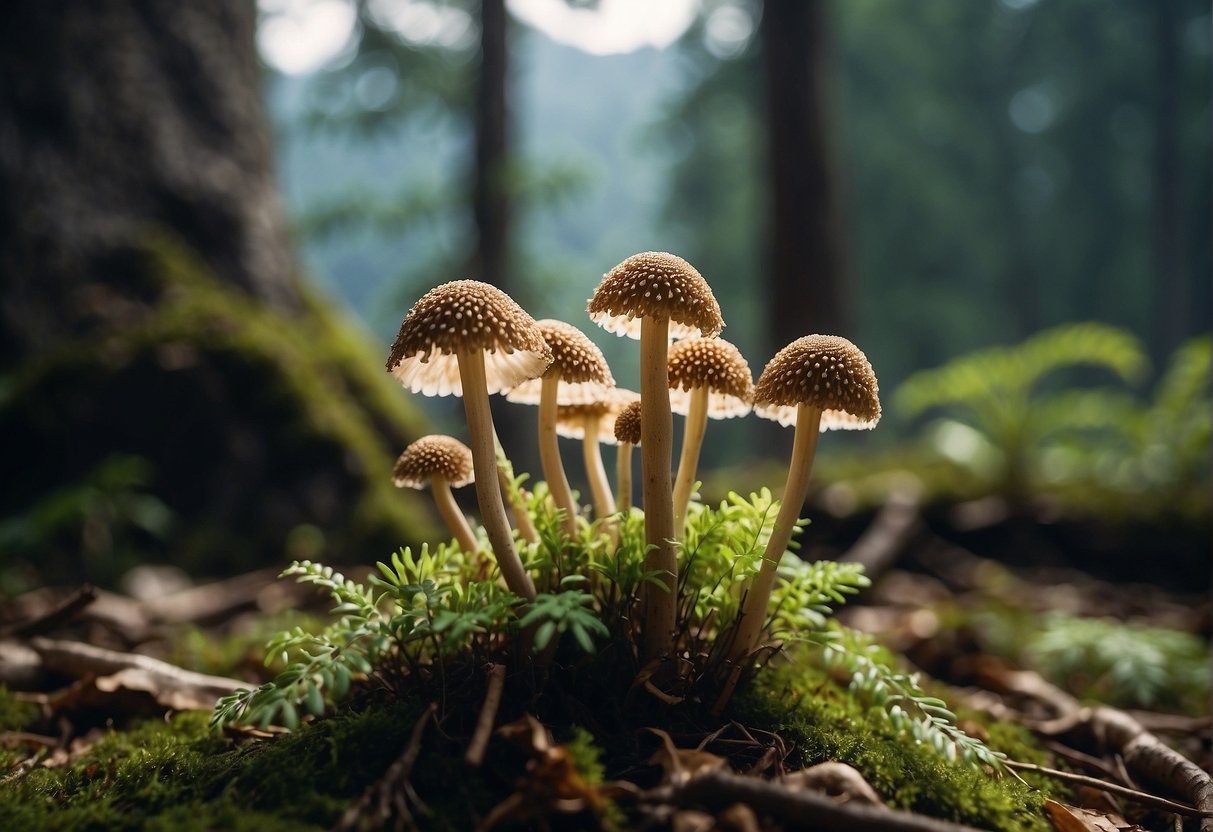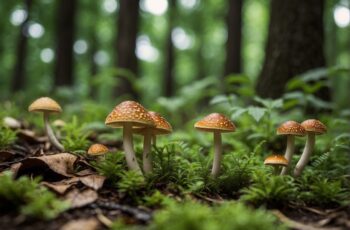Nestled in the vastness of the Himalayas grows a culinary gem that piques the interest of foragers, chefs, and gourmands alike—the Himalayan morel. These distinctive mushrooms, identifiable by their honeycomb appearance, are not only a gastronomic delight but also a symbol of the rich biodiversity and ecological wealth of the region. Due to their elusive nature and the intricate methods required for their collection, Himalayan morels command a high market price and are often deemed a luxury ingredient. Unlike commonly cultivated mushrooms, morels require specific conditions provided naturally by the Himalayan environment to thrive.

The culinary applications of Himalayan morels are versatile. They are praised for their unique flavour and earthy aroma that can elevate the simplest of dishes. Nutritionally, they are sought after for their high protein content and array of minerals and vitamins, contributing to a well-rounded diet. For local communities in the Himalayas, the harvesting season of these morels not only marks an annual tradition but also a vital period for additional income, closely entwined with the sustainability and preservation of their local ecosystem. It is your understanding of these delicate relationships between the environment, economy, and gastronomy that can deepen the appreciation for these rare mushrooms.
Key Takeaways
- Himalayan morels are prized for their unique taste and nutritional value.
- They’re foraged post snowfall in the Himalayas, reflecting the region’s ecological richness.
- Morels boost local economies and play a role in sustainable foraging practices.
Understanding Morels

When exploring the realm of the Morchella genus, you’ll discover a fascinating diversity of species, each with its unique morphology and preferred habitats. These edible fungi are not only a gourmet treat but also an intriguing subject of study for their complex life cycles and ecological roles.
Taxonomy and Species Diversity
Morchella, the genus of fungi known as morels, belongs to the family Morchellaceae and the order Pezizales. This genus is remarkable for its species richness, especially in forested regions like the Sino-Himalayan Forest Subkingdom. For example, within this genus, you’ll find Morchella esculenta, also known for its delectable taste. As eukaryotic organisms, morels share their domain with all life forms possessing complex cells.
Morphology of Morels
The morel mushroom is celebrated for its signature honeycomb appearance. A typical morel will have a pitted and ridged cap which is attached to the stalk at the base. Unlike some mushrooms, the morel is hollow from the tip of the cap to the bottom of the stem, a key feature in identification.
Morel Habitats
Morels have a particularly strong association with forests, thriving in both hardwood and coniferous ecosystems. They form mycorrhizal relationships with trees, which is a symbiotic association where both the fungus and the tree benefit, enhancing the forest’s ecology. Typically, these edible fungi emerge in the spring, often found in areas recently affected by fire or those rich in organic matter.
Cultivation and Harvesting

In the rugged terrains of the Himalayas, cultivating and harvesting morels is as much an art as it is a science. These treasured fungi require specific conditions to thrive and are gathered with practices that ensure sustainability.
Growing Morel Mushrooms
You’ll find that growing morel mushrooms is a challenging endeavor, best suited to the patient outdoorsman. Morels are particular about their environment, favoring the temperate climates of the northern hemisphere. You’ll need a substrate that closely mimics the forest floor—rich in nutrients and organic matter. To initiate growth, it’s important to maintain a soil temperature around 45°F, with humility levels that are consistently high. For successful cultivation, replicate the natural cycle of these mushrooms, which often follow a seasonal pattern linked to forest fires, rejuvenating in the nutrient-rich soil that fires leave behind.
Commercial Harvesting Practices
When it comes to commercial harvesting practices, understanding the market is crucial since Himalayan morels are a sought-after and often expensive commodity. Harvesters should be aware that the price of morels can vary greatly based on quality and scarcity. Due to their high cost and demand, it’s essential to adopt sustainable harvesting methods. This includes only picking mature specimens and avoiding over-harvesting in a single area. Remember, your practices heavily influence the availability of morels for years to come, impacting both the market and the ecosystem.
Environmental Impact and Conservation
The Himalayan morels, like many other natural resources, come with an inherent responsibility towards environmental impact and conservation. Over-harvesting can lead to a decrease in morel populations, which is why it’s important to harvest responsibly. Be mindful of your impact on the surrounding ecosystem—avoid trampling undergrowth and disrupt as little as possible. Engaging in conservation efforts, such as responsible foraging and supporting local regulations to prevent excessive commercial exploitation, helps ensure that these valuable fungi remain part of the northern hemisphere’s natural heritage.
Gastronomy and Nutrition
Himalayan morels are a culinary treasure sought after by outdoor enthusiasts and food lovers alike. Sought for their rich flavor, they elevate dishes from good to gourmet.
Culinary Uses
Guchhi, as these edible mushrooms are commonly known, are central to many Himalayan dishes. Their unique taste and texture work beautifully in a pulao, richly infused with fragrant spices and aromatic herbs. To truly appreciate the delicacy of morels, you might sauté them in butter with garlic, onions, and a selection of traditional spices. Their earthy, truffle-like flavor is a favorite among chefs, making them a staple in high-end soups and gourmet preparations. When you’re out in the wild, the addition of morels to your campfire meal can transform a simple dish into a profound gastronomic experience.
Health Benefits and Nutritional Value
Guchhi is not only a delicacy; it is also a medicinal mushroom known for its health benefits. These wild mushrooms are a source of essential nutrients. For instance, they are notably high in Vitamin D, providing more than a quarter of your daily needs per 100 grams. The nutritional profile of morels on a dry weight basis typically includes about 25.0% protein, essential fatty acids, vitamins, minerals, and organic acids that contribute to their complex nutritional value. With relatively low calories but high nutrient density, they are a smart choice for maintaining a healthy, balanced diet, which is particularly important when you’re relying on your physical condition for outdoor activities.
Geographical Significance

As you explore the world of mushrooms, the Himalayas emerge as a critical region. Here, the unique environmental factors contribute to the proliferation of highly sought-after morel species.
Morels in the Himalayan Region
The Himalayan region, encompassing parts of India, Pakistan, and China, serves as a haven for morel mushrooms. In areas like Jammu and Kashmir, Himachal Pradesh, and the foothills of the Himalayas, these fungi are not just a culinary delight but also a source of income for local villagers. The conifer and oak forests here create an ideal habitat for morels, particularly the black, yellow, and grey varieties. The black morel, considered a delicacy, grows in abundance in these parts, often appearing post forest fires or increased rainfall. The delicate structure of morels requires careful foraging, a skill well-honed by the locals who may compare their appearance to a tiny, natural garland. These indigenous ingredients, when combined with local flavors like onion, coriander, and ginger, create dishes that are a testament to the regions’ unique palates and biodiversity.
Global Distribution and Availability
Moving beyond the Himalayas, morels are a global phenomenon, prized in North America, Poland, and Canada for their distinctive taste and texture. Morels appear in areas where the climate supports their growth, often appearing in places recovering from ecological events like forest fires. Observations suggest that climate change has an impact on their availability, affecting the species diversity seen in traditional foraging spots. Molecular phylogenetics research shows endemism and provincialism in morel species, which is why you’ll find certain varieties, such as the yellow and brown morels, thriving predominantly in North American forests, often in close communion with conifers and hardwood trees.
Your curiosity might lead you to foraging cooperatives, or coops, that practice sustainable harvesting to ensure that the bounty of morels remains available for generations. Keep in mind that respecting these natural habitats is pivotal, as it secures the delicate balance needed for morels to flourish.


